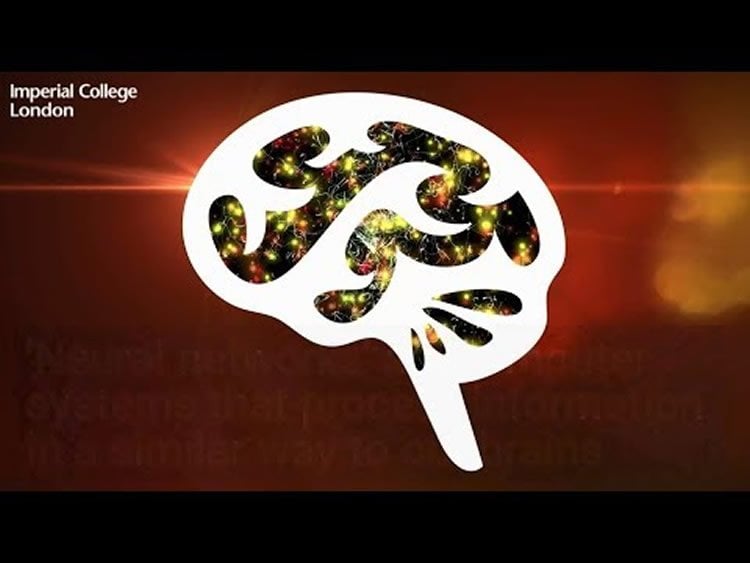Summary: Writing magnetic patterns onto nanowires could help computers better mimic how the brain processes information, a new study reports.
Source: Imperial College London.
Researchers have shown how to write any magnetic pattern desired onto nanowires, which could help computers mimic how the brain processes information
Much current computer hardware, such as hard drives, use magnetic memory devices. These rely on magnetic states – the direction microscopic magnets are pointing – to encode and read information.
Exotic magnetic states – such as a point where three south poles meet – represent complex systems. These may act in a similar way to many complex systems found in nature, such as the way our brains process information.
Computing systems that are designed to process information in similar ways to our brains are known as ‘neural networks’. There are already powerful software-based neural networks – for example one recently beat the human champion at the game ‘Go’ – but their efficiency is limited as they run on conventional computer hardware.
Now, researchers from Imperial College London have devised a method for writing magnetic information in any pattern desired, using a very small magnetic probe called a magnetic force microscope.
With this new writing method, arrays of magnetic nanowires may be able to function as hardware neural networks – potentially more powerful and efficient than software-based approaches.

The team, from the Departments of Physics and Materials at Imperial, demonstrated their system by writing patterns that have never been seen before. They published their results today in Nature Nanotechnology.
Dr Jack Gartside, first author from the Department of Physics, said: “With this new writing method, we open up research into ‘training’ these magnetic nanowires to solve useful problems. If successful, this will bring hardware neural networks a step closer to reality.”
As well as applications in computing, the method could be used to study fundamental aspects of complex systems, by creating magnetic states that are far from optimal (such as three south poles together) and seeing how the system responds.
Source: Hayley Dunning – Imperial College London
Publisher: Organized by NeuroscienceNews.com.
Image Source: NeuroscienceNews.com image is credited to the researchers.
Original Research: Abstract for “Realization of ground state in artificial kagome spin ice via topological defect-driven magnetic writing” by Jack C. Gartside, Daan M. Arroo, David M. Burn, Victoria L. Bemmer, Andy Moskalenko, Lesley F. Cohen & Will R. Branford in Nature Nanotechnology. Published online November 20 2017 doi:10.1038/s41565-017-0002-1
[cbtabs][cbtab title=”MLA”]Imperial College London “New Way to Write Magnetic Information May Pave Way For Hardware Neural Networks.” NeuroscienceNews. NeuroscienceNews, 21 November 2017.
<https://neurosciencenews.com/neural-network-magnetism-7999/>.[/cbtab][cbtab title=”APA”]Imperial College London (2017, November 21). New Way to Write Magnetic Information May Pave Way For Hardware Neural Networks. NeuroscienceNews. Retrieved November 21, 2017 from https://neurosciencenews.com/neural-network-magnetism-7999/[/cbtab][cbtab title=”Chicago”]Imperial College London “New Way to Write Magnetic Information May Pave Way For Hardware Neural Networks.” https://neurosciencenews.com/neural-network-magnetism-7999/ (accessed November 21, 2017).[/cbtab][/cbtabs]
Abstract
Realization of ground state in artificial kagome spin ice via topological defect-driven magnetic writing
Arrays of non-interacting nanomagnets are widespread in data storage and processing. As current technologies approach fundamental limits on size and thermal stability, enhancing functionality through embracing the strong interactions present at high array densities becomes attractive. In this respect, artificial spin ices are geometrically frustrated magnetic metamaterials that offer vast untapped potential due to their unique microstate landscapes, with intriguing prospects in applications from reconfigurable logic to magnonic devices or hardware neural networks. However, progress in such systems is impeded by the inability to access more than a fraction of the total microstate space. Here, we demonstrate that topological defect-driven magnetic writing—a scanning probe technique—provides access to all of the possible microstates in artificial spin ices and related arrays of nanomagnets. We create previously elusive configurations such as the spin-crystal ground state of artificial kagome dipolar spin ices and high-energy, low-entropy ‘monopole-chain’ states that exhibit negative effective temperatures.
“Realization of ground state in artificial kagome spin ice via topological defect-driven magnetic writing” by Jack C. Gartside, Daan M. Arroo, David M. Burn, Victoria L. Bemmer, Andy Moskalenko, Lesley F. Cohen & Will R. Branford in Nature Nanotechnology. Published online November 20 2017 doi:10.1038/s41565-017-0002-1






